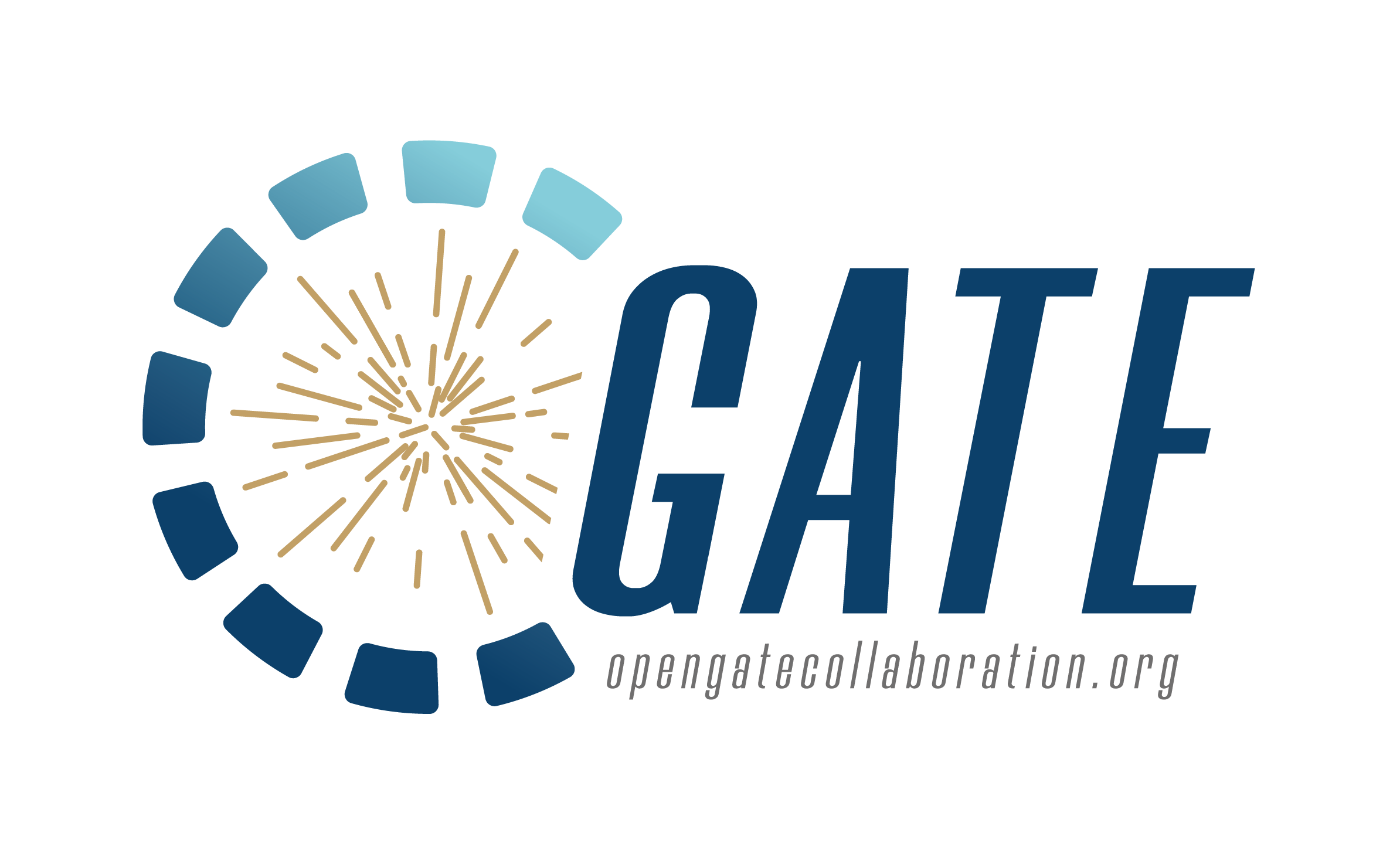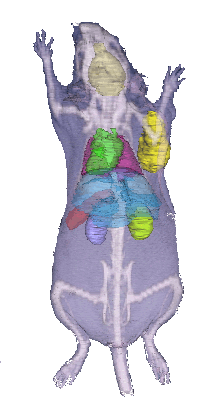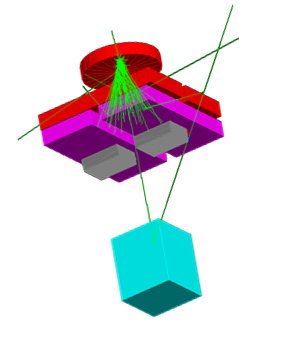Simulation & Modeling


Since 2002, the group is involved in the development and validation of GATE and Geant4-DNA Monte Carlo platforms for radiation therapy applications. The group is involved in the Excellence laboratory PRIMES and in GDR Mi2b (Outils et Méthodes nucléaires pour la lutte contre le cancer).
We explore the applicability of GATE for calculating: dose distributions in water or anthropomorphic phantoms using photons or electrons, dose calculations in nuclear medicine, both for diagnostic applications (e.g. analysis of the radiation burden to patients) and for therapeutic applications (e.g., treatment planning in radionuclide therapy and treatment verification through emission scans) and in external beam therapy, especially in emerging areas such as proton- and light-ion therapy. To make these benefits fully available to the scientific community, LPC, through the OpenGATE collaboration is participating to developments of new features for the GATE platform, e.g. for user-friendly input of the source and patient geometry (voxelized phantoms etc.), and for easy generation of the required dosimetric output data.
Innovative targeted radionuclide therapy
Developments of new radiopharmaceutics involve accurate dosimetry studies aiming to calculate the optimal radiation dose to induce tumour growth suppression while reducing radiation toxicity in neighboring normal organs which show physiological uptake of the radiotracer. Before considering a clinical transfer to human, dosimetric studies are conducted with small animals (mice or rabbits).
Until now, we performed dosimetry for different kind of radiopharmaceutics, as examples:
- Melanin targeting ligands coupled with 131-Iodine
- Monoclonal antibodies coupled with 111-Indium (imaging) and 90-Yttrium
- Prostate specific membrane antigen (PSMA) coupled with 177-Lutetium

Radiation beam therapy using electrons, photons and ions
Until now, we participated to the validation of different kind of preclinical and clinical radiation therapy beams:
- Radiation therapy using photons and electrons: VARIAN Clinac 2100C, SL Elekta, Novalis TX
- Preclinical self contained X-ray system: X-RAD 320 Biological Irradiator (Precision X-Ray Inc., North Branford, CT)
- Hadrontherapy: Proton and carbon_ion beams (clinical and preclinical)

Radiation biology
Multicellular tumor spheroids are realistic in-vitro systems in radiation biology research to study the effect of anticancer drugs or to evaluate the resistance of cancer cells within specific conditions. When combining the modeling of spheroids together with the simulation of radiation using Monte Carlo methods, one could estimate cell and DNA damage to be compared with experimental data. We developed a Cell Population (CPOP, http://cpop.in2p3.fr) modeler combined to Geant4-DNA simulations in order to tackle how energy depositions are allocated to cells, especially when enhancing radiation outcomes using high-Z nanoparticles.

Development of the GATE platform to tackle biological effectiveness in light ion therapy
We aim to improve, develop and validate the first open-source, multi-scale and experimentally validated Monte Carlo simulation platform able to predict biological effectiveness in light ion therapy (proton and carbon therapy beams). Built around a collaboration of partners, including physicists, medical physicists, radiochemists and radiobiologists, we are setting-up:
- comparative measurements including experimental assessment of radiation quality with microdosimeters and simulations to optimize treatment plans
- an evaluation of relative biological effectiveness variations along proton and carbon therapy beams
- the development and validation of efficient radiolysis models in water and biological targets
- the experimental assessment of cell and DNA damage for the full validation of the platform with selected 2D and 3D malignant and non-malignant cell models. All the developments will be fully included in the GATE Monte Carlo simulation platform and will be accompanied by a variety of examples demonstrating these new functionalities.
Our research projects:
January 2021 – January 2025
RAMONES project : Radioactivity Monitoring in Ocean Ecosystems. 4-year project, European call: H2020-FETPROACT-2018-2020.
November 2020 – November 2023
FLASHMOD project (call PCSI 2020), End-to-end dosimetry for preclinical proton FLASH irradiation at ARRONAX. 3-year project funded by the Physics, Mathematics and Engineering sciences applied to the Cancer Research national program (PhysiCancer 2019)
Since September 2019
Partner of a phase I clinical transfer, approved by ANSM (MEDAECNAT-2018-06-00055) to test 131I-ICF01012. In charge of dose calculations to patients using the GATE platform.
May 2015 – July 2019
A-SPECT project: A highly Sensitive 99mTc-NTP 15-5 SPECT imaging targeting proteoglycans for assessing ostearthritis response to innovative therapeutic approaches. - 3-year project funded by ANR (National Research Agency)
June 2013 – June 2015
RACE project (RAdiation resistance of Cancer CElls using GEANT4 DNA). 2-year project funded by the Physics, Mathematics and Engineering sciences applied to the Cancer Research national program (PhysiCancer 2013)
September 2011- September 2013
DOGME project (DOsimetry through GATE Monte Carlo simulations for an innovative targeted radionuclide therapy of MElanoma). 2-year project funded by the Physics, Mathematics and Engineering sciences applied to the Cancer Research national program (PhysiCancer 2011)

